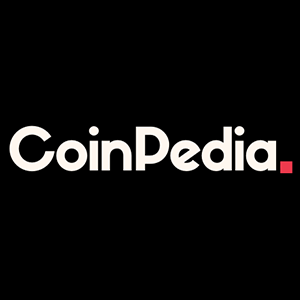Tokenization won’t take off without a reality check | Opinion
4 min read
Disclosure: The views and opinions expressed here belong solely to the author and do not represent the views and opinions of crypto.news’ editorial. Tokenization has become a buzzword, unfortunately, it’s failing to prove its value. Investors remain unconvinced, and inconsistent regulations are stalling progress. Too often, assets are being tokenized just for the sake of it, without providing any improvements in accessibility, efficiency, or liquidity. Tokenized portfolios on-chain sound sexy and exciting to crypto native investors, but that’s a small niche of the market. For tokenization to truly take off, it needs buy-in from institutional and retail investors who want to modernize traditional assets, and not just create digital twins of inefficient traditional products. You might also like: Tokenization as a funding backdoor for European founders | Opinion So far, the industry’s focus has been on compliance and replicating real-world assets onchain, but mainstream investors still lack compelling reasons to engage. Despite institutional interest from firms like BlackRock, adoption remains sluggish because the industry has failed to address core investment concerns. Tokenized assets are still difficult to trade, lack liquidity, and exist in a fragmented regulatory landscape. This complication and doubt cause traditional investors with big portfolios to not even bother with the space at all—some of whom see Bitcoin ( BTC ) as a Ponzi scheme. Institutional investors have to get involved in making some decisions around investing in cryptocurrency, but it will take time. Providing the proper education and tools is critical when understanding how to navigate tokenized assets confidently. The core reality check Tokenization should focus on expanding practical functionality for investors. Boston Consulting Group, in a recent white paper, projects in multiple scenarios that tokenization of assets could reach trillions of dollars of Amulet (AUM) by 2030. Real value means greater liquidity, better assessment options, increased transparency, and trust in a system that can smartly utilize these assets. Currently, when you hold these assets with major institutions and custodians, your options are extremely limited. In some cases, assets can be used as collateral, but the process remains convoluted and restrictive. For example, we’re not talking about crypto native investors that put $28.6 trillion worth of assets onchain. More so, pension fund managers, and I can’t imagine them using a MetaMask wallet to hold real-world assets tokens and utilize them in a smart contract to provide decentralized finance functionality. Tokenization presents a unique opportunity to transform traditional finance. By turning static assets into smart contracts, these tokens can automate a lot of financial processes and create new use cases not available in traditional finance. However, we cannot rely on the old legacy financial infrastructure: traditional custodians, fund managers, and administrators. According to the World Economic Forum, tokenization could unlock collateral mobility that has never been possible. The process remains costly and time-consuming,and neither institutional nor retail investors will engage. It’s time to turn this into a reality and commit to delivering real, tangible value to attract long-term adoption. Make it make sense Regulatory clarity remains inconsistent and has created a fragmented market. Jurisdictions like the Hong Kong Monetary Authority and Abu Dhabi Global Market are taking proactive steps, but a fragmented global landscape makes compliance a major challenge. For instance, if I want to tokenize an asset in the ADGM and ensure compatibility with a tokenized asset under the HKMA, or want to trade on a decentralized exchange, I would need to comply with both the ADGM regulations, where I am based, and the HKMA regulations. Now, imagine that there are not just two jurisdictions, but 150. When each has its own standards and rules, compliance is nearly impossible, and the dream of a seamless financial system is dead in the water. Large financial institutions and service providers are already working to find out how they can harmonize a digital asset like tokenization with a regulatory framework. We must push for a global regulatory framework for digital assets, rather than siloed frameworks of regional legislation. Without regulatory alignment, tokenized assets risk being confined to niche markets rather than achieving true global adoption. To reach financial democratization, we need utility Tokenization shouldn’t just be about digitizing old financial models; it should create new ways for assets to be utilized, traded more efficiently, and/or borrowed against. Tokenization alone is not enough. Assets must be made smarter and deliver tangible value to global investors, regulators, and service providers. Right now, many tokenized investment opportunities are still limited to qualified investors, which reinforces existing financial barriers rather than breaking them down. True democratization means opening up access to retail investors, not just tokenizing assets for institutions. This industry is still in its early stages, which means there’s still plenty of time to shape its future the right way. If regulators, jurisdictions, and innovators can align on the proper framework, the RWA tokenization sector could see massive growth by 2030 . The future of tokenization depends on moving beyond the hype. Read more: Tokenization is the inevitable future of real estate | Opinion Author: Rob Daykin Rob Daykin is a co-founder of Realize, a leading tokenization platform for real-world assets. He is at the forefront of driving growth, accessibility, and visibility in the evolving digital economy. With over 15 years of experience in fund administration and a vast knowledge of crypto and decentralized finance, Rob expertly bridges traditional finance with cutting-edge blockchain solutions. He has held senior positions at IQ-EQ and State Street Alternative Investment Solutions. Additionally, Rob is also the co-founder of Nakama Labs, a web3 venture fund and innovation hub focused on decentralized technologies.

Source: crypto.news



